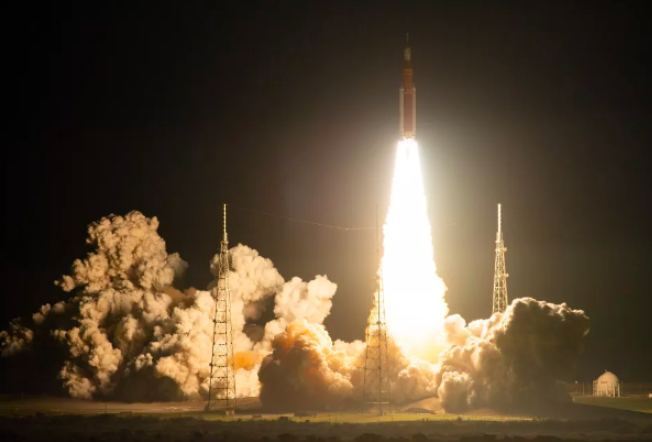We’re finally back on the Moon!
NASA's Artemis 1 mission launches toward the moon from Kennedy Space Center in Florida on Nov. 16, 2022. (Image credit: NASA/Joel Kowsky)
NASA's Artemis program is a collection of ongoing space missions.
There are three Artemis missions that are currently underway: Artemis 1, an uncrewed test flight that will circle and fly past the Moon; Artemis 2, a crewed flight beyond the Moon that will take humans the furthest they've ever been in space; and Artemis 3, which will land the first female astronaut and first astronaut of color on the Moon and spend a week performing scientific studies on the lunar surface.
On November 16th at 1:47 a.m., NASA's massive new rocket lifted off from Florida's Kennedy Space Center. This is a significant milestone in the agency's plans to return astronauts to the Moon.
Artemis 1 will travel 450,000 kilometers to the Moon, where it will orbit 400 kilometers above the lunar surface before continuing 64,373 kilometers into deep space. The module will splash down in the Pacific Ocean near California.
When Apollo missions ended in 1972, NASA concentrated on developing and flying the space shuttle, which operated from 1981 to 2011, as well as developing and working aboard the International Space Station, which has been permanently occupied since 2000.
The far side of the Moon as photographed by the Orion spacecraft on 21 November | Image credit: NASA
The launch placed an unmanned astronaut capsule called Orion into Earth orbit and set it on a course to fly past the Moon and back in 26 days. The Artemis I flight will test if the rocket and capsule can safely transport humans and a variety of science and technology experiments will be conducted in deep space on board. These are intended to broaden lunar knowledge, advance technological developments, and shed light on deep space radiation.
Moonikin 'Campos' being inspected | Credit: NASA
Three mannequins dressed in the First-Generation Orion Crew Survival System spacesuit, which the real astronauts will wear on Artemis 2 and 3, are also on board. Sensors have been installed throughout the moonikins to provide data on what human crew members may encounter in flight.
Artemis 1 mission flight was postponed following two failed attempts in late August and early September due to hardware issues, including liquid hydrogen fuel leaks. NASA then passed up a launch opportunity in late September due to an impending hurricane before returning it to the launch pad, where it encountered high winds and rain from a different storm last week. NASA officials claim that the storm caused only minor damage to the rocket, including the peeling of a strip of caulking that will not jeopardize the launch.
NASA is primarily focused on Artemis missions 1–3, but they are also planning for the future and have already awarded contracts for boosters on rockets up to Artemis 13!
Meanwhile, in preparation for the fourth Artemis mission, Airbus announced in June 2022 that they had received the structure of the module that will allow astronauts to live in orbit around the moon.


